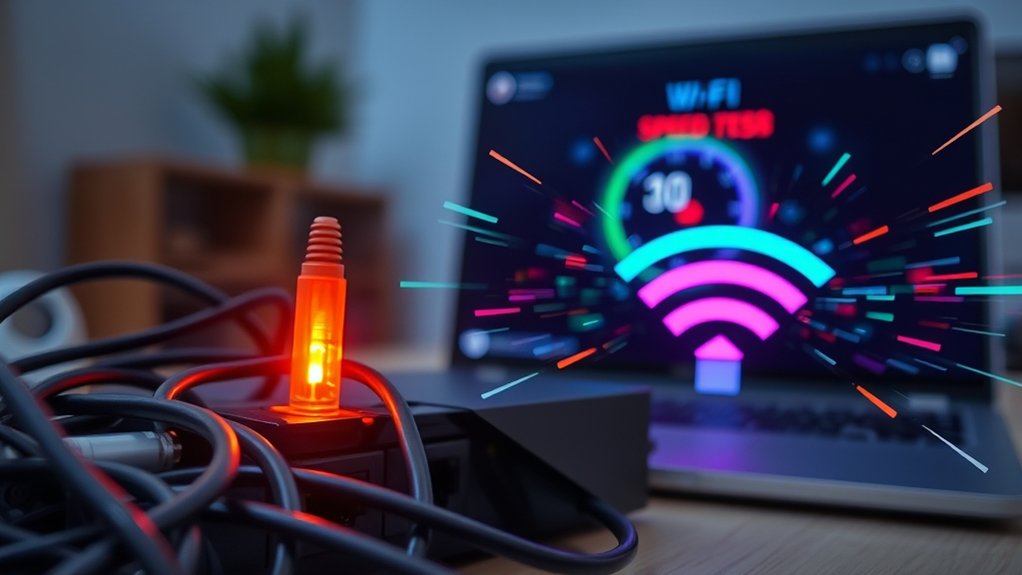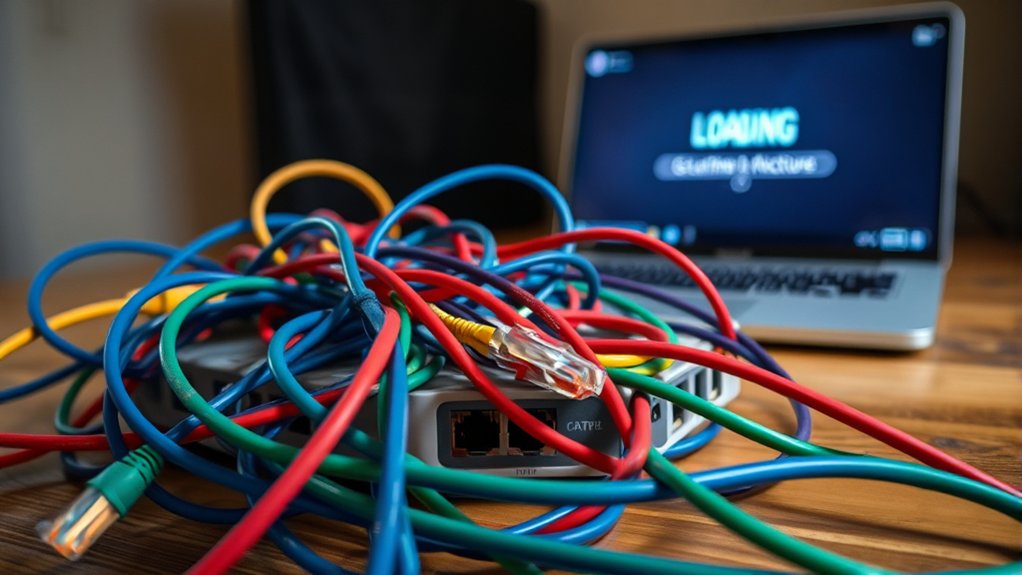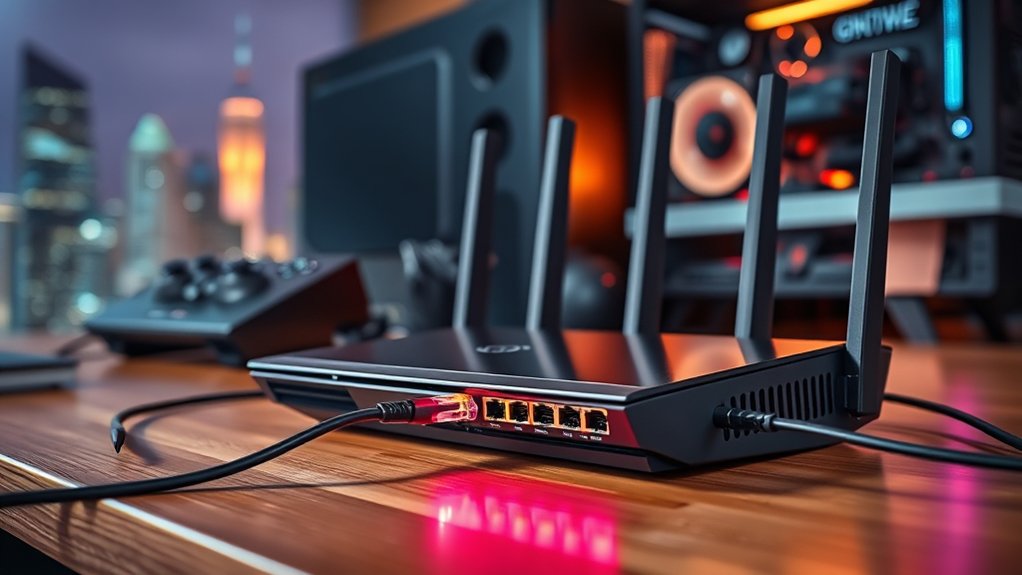High ping is primarily caused by slow internet connections, limited bandwidth, and geographic distances from game servers. Network congestion from multiple devices sharing the same bandwidth likewise contributes to latency. Server-related issues can exacerbate the problem. Effective solutions include testing internet speed, restarting the router, and optimizing settings. Switching to wired connections and closing background applications can greatly improve performance. Investigating advanced strategies may provide further insights into resolving persistent high ping issues.

High ping, characterized by delays in data transmission during online activities, remains a considerable concern for gamers and internet users alike. Various factors contribute to this issue, impacting the overall experience considerably.
One primary cause of high ping is a slow internet connection, where limited bandwidth results in delayed data transfers. Users relying on geographic locations far from game servers face longer travel times for data, consequently experiencing increased latency. Additionally, geographic distance can significantly affect latency as it increases the time taken for data to travel to servers. High ping can particularly disrupt gameplay in competitive settings where reaction times are crucial.
One of the main contributors to high ping is a slow internet connection, leading to delays in data transmission.
Network congestion, often arising from multiple devices consuming shared bandwidth, exacerbates this phenomenon, especially during peak usage times.
Server-related issues can as well lead to high ping. Remarkably, problems stemming from the server side, such as overloads or maintenance, can interfere with connection speeds.
Furthermore, outdated hardware, such as old routers or network adapters, may fail to manage high-speed connections effectively, finally hindering performance.
To address high ping, users can employ several strategies. Initially, testing internet speed provides a baseline for network performance. Restarting the router frequently resolves temporary congestion, improving connection speeds.
In addition, switching to a wired Ethernet connection typically offers superior performance compared to Wi-Fi because of reduced interference. Optimizing router settings, particularly through Quality of Service (QoS) adjustments, can prioritize gaming traffic.
Closing background applications as well prevents bandwidth depletion.
Upgrading network infrastructure becomes imperative in some cases. Newer routers accommodate higher speeds and improved performance, while high-quality Ethernet cables minimize signal degradation.
Verifying DNS server performance can lead to reduced ping times. Clearing physical obstructions that disrupt Wi-Fi signals further improves reliability.
Furthermore, software could interfere with network efficiency. Appropriately configuring antivirus and firewall settings may eliminate unnecessary disruptions, whereas tools like PingPlotter assist in monitoring latency.
Regular software updates maintain compatibility with evolving networks, preserving peak performance.
In the end, understanding the causes of high ping and actively pursuing remedies empowers users, facilitating a smoother online experience.
Frequently Asked Questions
How Does High Ping Affect Online Gaming Experience?
High ping greatly detracts from the online gaming experience, particularly in fast-paced genres.
It introduces delays that affect reaction times, resulting in players experiencing a lag in their actions. The resulting positional discrepancies can undermine strategic gameplay, placing those with high ping at a competitive disadvantage.
Furthermore, severe lag may lead to disconnections, further frustrating players. As a result, high ping diminishes the overall enjoyment and fluidity of gaming sessions, impacting engagement and performance.
Is High Ping the Same as High Latency?
High ping and high latency are closely related concepts but are not synonymous.
Ping represents the round-trip time for data packets, whereas latency encompasses all delays during data transmission, including processing time.
For example, a high ping of 150 milliseconds indicates noticeable delays in online gaming.
Experts highlight that although high ping reflects active data transfer times, high latency encompasses broader network performance factors that affect user experience, particularly in real-time applications.
Can Hardware Upgrades Reduce High Ping?
Hardware upgrades can considerably reduce high ping in online gaming. For instance, specialized gaming routers equipped with Quality of Service (QoS) settings prioritize game traffic, thereby minimizing latency.
Experts suggest that utilizing high-performance network adapters and upgrading to Cat 5e or Cat 6 cables boosts data transmission efficiency.
Furthermore, advanced routers and mesh networks improve signal stability, eventually contributing to a consistent and responsive gaming experience for users across various online platforms.
Does Location Affect Ping Rates Significantly?
Location does certainly affect ping rates greatly, primarily because of the distance between users and servers.
When servers are positioned closer, latency drops markedly, often reaching below 200ms for ideal performance. Conversely, distant servers can see latency soar, as data must navigate longer distances.
Network congestion and infrastructure play pivotal roles; accordingly, effective router placement and upgraded internet plans could mitigate high ping, ensuring smoother connectivity and reduced response times.
Are Certain Internet Service Providers Better for Low Ping?
Certain internet service providers excel in delivering low ping. Verizon Fios, for instance, demonstrates the lowest average latency, making it ideal for online gaming activities.
Frontier Fiber follows closely with an average latency of 17 milliseconds. Moreover, AT&T Fiber offers competitive latency alongside impressive speeds reaching up to 5 Gbps.
These providers employ fiber technology, leading to improved performance and stability compared to conventional options, greatly enhancing user experience in latency-sensitive applications.









